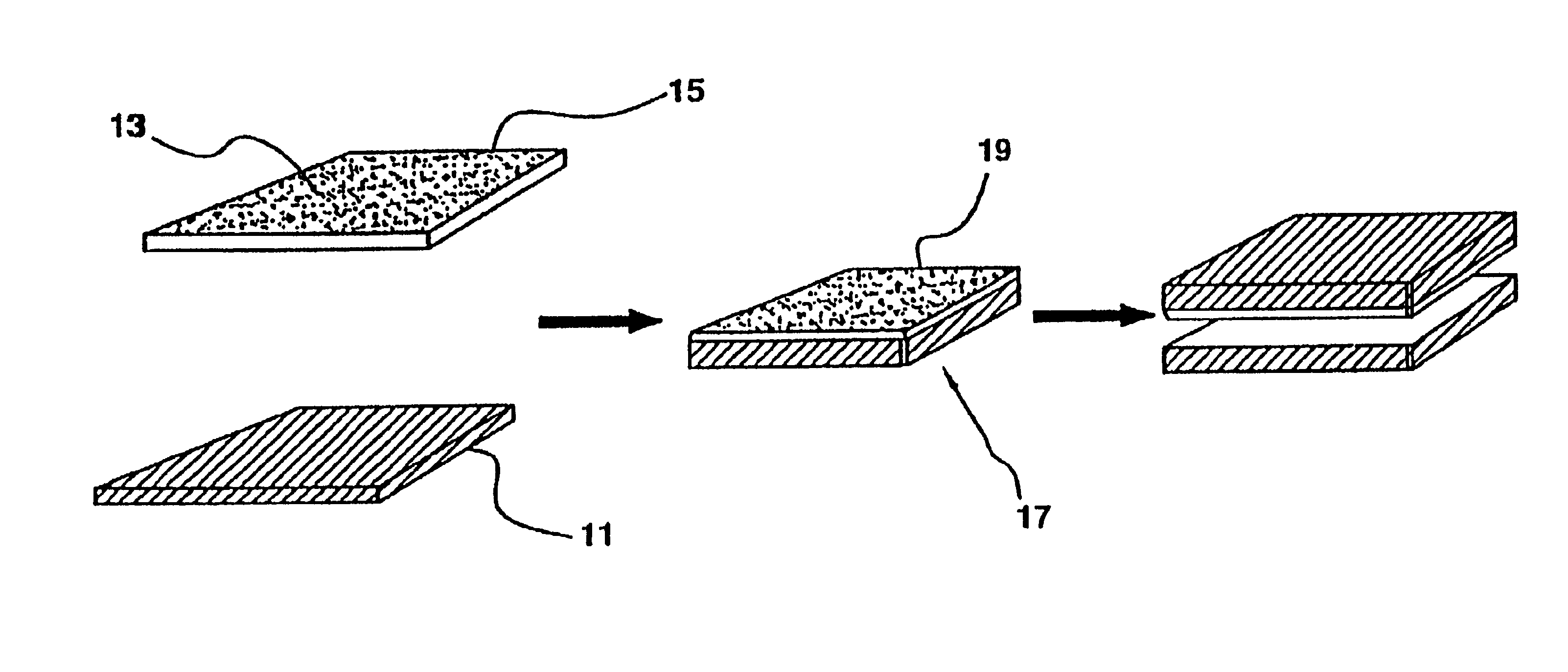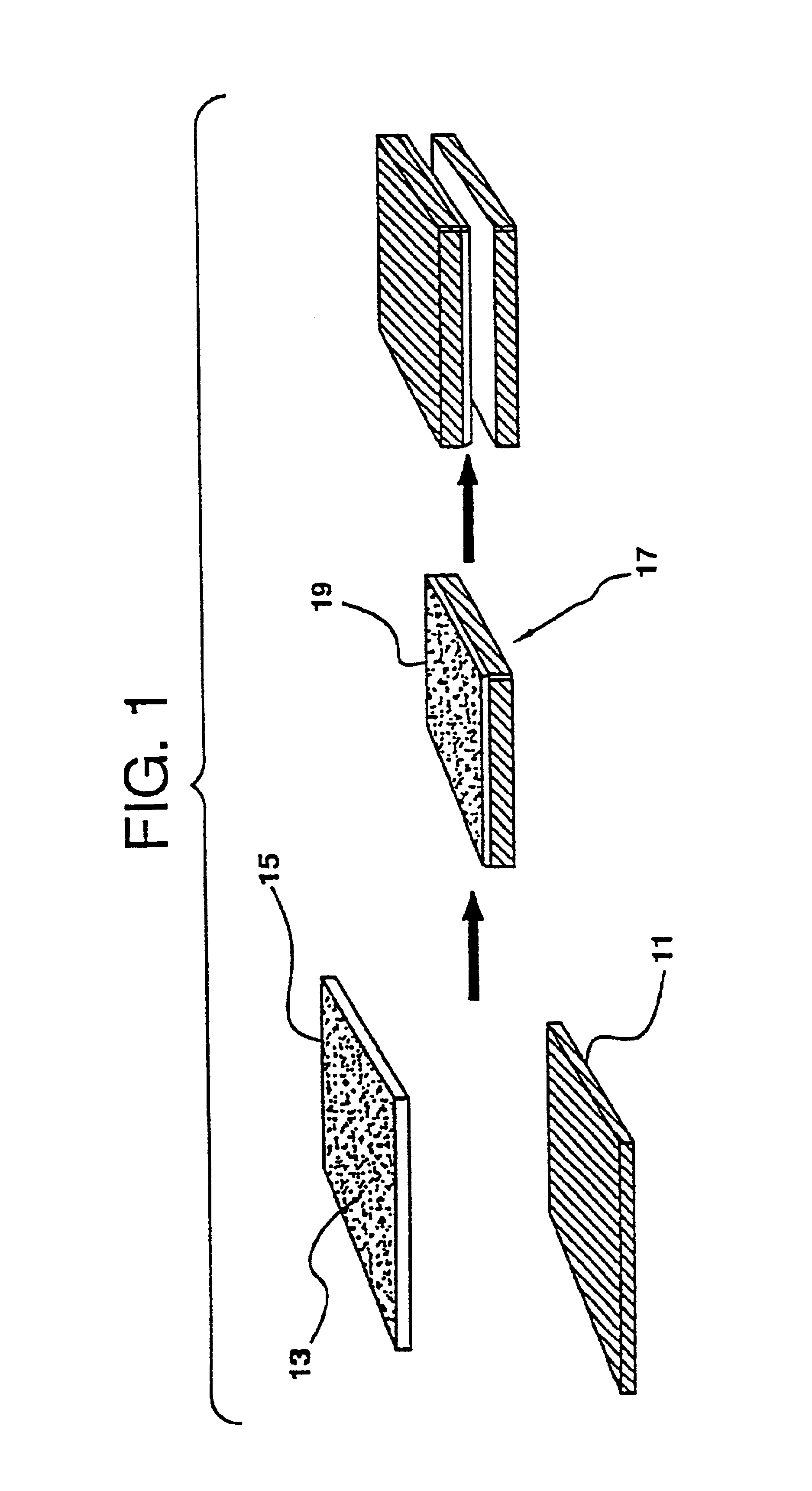Temperature-controlled induction heating of polymeric materials
a technology of induction heating and polymer materials, applied in the direction of magnetism of inorganic materials, magnetic materials, magnetic bodies, etc., can solve the problem of temperature rising, and achieve the effect of increasing the heat, and increasing the hysteresis loop
- Summary
- Abstract
- Description
- Claims
- Application Information
AI Technical Summary
Problems solved by technology
Method used
Image
Examples
example 1
Extrusion Compounding / Compression Molding
[0111]The following compounds were successfully extruded and compression molded into sheets for evaluation in induction heating experiments:[0112]10, 12, and 15v / o. SrF in PSU[0113]15 and 30v / o SrF in PEEK[0114]15v / o SrF in PEI[0115]20v / o Co-2Y in PSU[0116]20v / o Mg-2Y in Nylon-6[0117]15v / o Zn1 / Mg1-2Y in Nylon-6
SrF was obtained from Steward Ferrite (Chattanooga, Tenn.), under the tradename HM 181.
example 2
Induction Heating Procedures
[0118]All induction heating trials were done using a Lepel model T-7.5-3-DF-SW induction generator with a solenoid coil. The coil (No. S 1L) was a 1″ ID, 15 turn design constructed from ⅛″ tubing that had total length of ˜2.4″. With this coil, and a representative sample in the coil, the generator operated at a frequency of 3.2 MHz and an estimated power of 2.3 KW. All heating trial samples consisted of a 1″ square of compound, approximately 20 mils thick that was taped to a glass slide. In order to prevent the slide from cracking due to thermal shock, a 1″ square of 1 / 16″ thick ceramic insulation was placed under all samples. All data was collected using a Raytek IR pyrometer that was set up to sight between 2 turns on the coil at the sample. The Raytek pyrometer was roughly calibrated by heating 51 and 30 Vol. % SrF / PSU samples painted with a strip of temper paint. The known melt temperature of the temper paint (800° F.) was correlated with the reading ...
example 3
[0121]Heating experiments were conducted with a Heuttinger induction generator that produces approximately 20 KW of output power at 2.3 MHz. The Lepel generator used in earlier heating experiments produced an estimated power output of only 2.3 to 5.8 Kw. With the Heuttinger generator, and employing pancake coils with 3 to 5 turns, the Curie temperature of 450° C. was reached in 15 to 30 seconds. The rapid heating phenomenon was confirmed with the Heuttinger generator for both bonded and non-bonded SrF.
[0122]Heating a virgin sample of 51 SrF / PSU to its Curie temperature without the application of a magnetic field (i.e., subjecting the sample to thermal energy only) does not produce rapid heating rates when heated a second time by induction.
[0123]Heating the susceptor inductively to temperatures below its Curie temperature also does not produce rapid heating rates when heated a second time by induction. To produce the rapid heating phenomenon, the susceptor must be preconditioned by ...
PUM
| Property | Measurement | Unit |
|---|---|---|
| size | aaaaa | aaaaa |
| Curie temperature | aaaaa | aaaaa |
| curie temperature | aaaaa | aaaaa |
Abstract
Description
Claims
Application Information
 Login to View More
Login to View More - R&D
- Intellectual Property
- Life Sciences
- Materials
- Tech Scout
- Unparalleled Data Quality
- Higher Quality Content
- 60% Fewer Hallucinations
Browse by: Latest US Patents, China's latest patents, Technical Efficacy Thesaurus, Application Domain, Technology Topic, Popular Technical Reports.
© 2025 PatSnap. All rights reserved.Legal|Privacy policy|Modern Slavery Act Transparency Statement|Sitemap|About US| Contact US: help@patsnap.com



